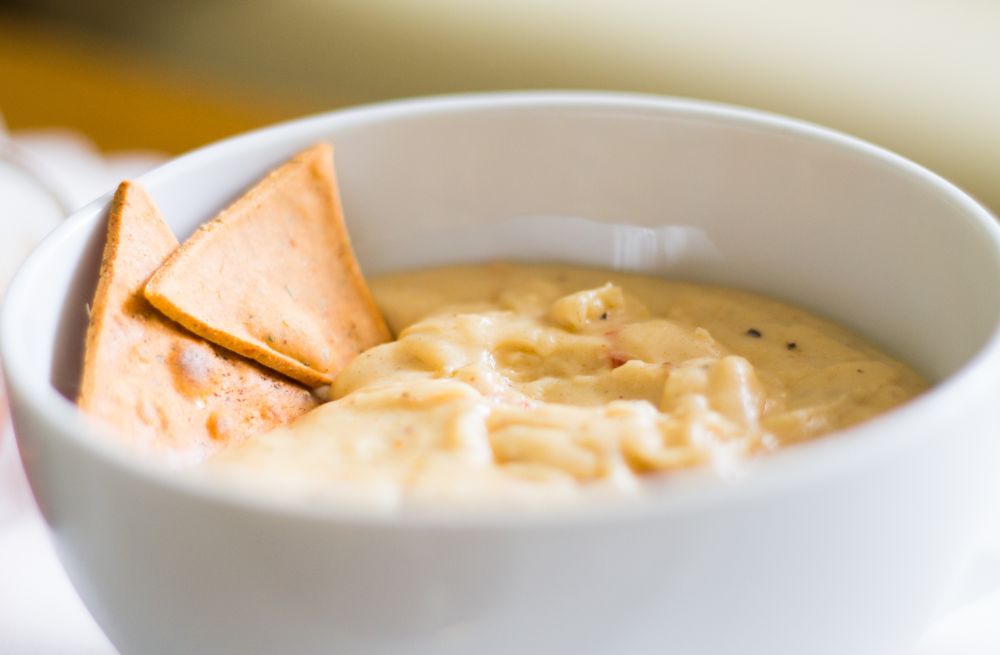For those who love queso dip, there’s good news! You can, in fact, freeze this cheesy goodness for future enjoyment. In this guide, we’ll delve into the process, tips, and potential pitfalls of freezing queso dip, ensuring that you get the best taste and texture every time you thaw and reheat.

What is Queso Dip?
Queso dip is a creamy, cheesy sauce often combined with chilies, tomatoes, and sometimes meat. It’s a staple in many Tex-Mex dishes and a beloved appetizer in many households and restaurants.
Freezing Basics: Why It Works
Freezing is a method used to preserve the freshness of many foods, including sauces and dips. By lowering the temperature below the freezing point, microbial activity that leads to spoilage is halted. This allows you to store the dip for extended periods without compromising its taste or safety.
How to Properly Freeze Queso Dip
- Cool First: Before freezing, ensure the dip is completely cooled to room temperature. This prevents condensation inside the container, which can affect the texture and flavor.
- Use Airtight Containers: Transfer your queso dip to airtight containers or heavy-duty freezer bags. Remove as much air as possible. This helps to prevent freezer burn and keeps the dip tasting fresh.
- Label and Date: Always remember to label your containers with the contents and date of freezing. This will help you keep track of how long the dip has been in the freezer.
- Portioning: If you have a large amount, consider portioning the dip into smaller amounts. This way, you can thaw just what you need, and the rest stays frozen for future use.
Thawing and Reheating: A Step-by-Step Process
- Thaw in the Refrigerator: The best method is to thaw your queso dip in the fridge. This ensures that it remains at a safe temperature, reducing the risk of bacterial growth. It can take several hours or overnight, depending on the portion size.
- Stir Well: Once thawed, give your queso dip a good stir. This helps to combine any separated ingredients and brings back the smooth consistency.
- Reheat Slowly: Heat your dip on low heat, either in a saucepan or microwave, stirring occasionally. Avoid overheating, as this can cause the dip to separate.
Potential Pitfalls and How to Avoid Them
- Texture Changes: Dairy products can sometimes become grainy or separated after freezing. This can be countered by stirring well upon thawing and heating slowly.
- Freezer Burn: This happens when air reaches the food inside the container. Using airtight containers and ensuring the dip is well-covered helps prevent this.
- Flavor Degradation: Over time, even frozen foods can lose some of their freshness. For optimal taste, consume frozen queso dip within 1-2 months.
Additional Tips for the Best Frozen Queso Experience
- Add Fresh Ingredients: Upon reheating, consider adding fresh ingredients like tomatoes or chilies to rejuvenate the flavor.
- Avoid Refreezing: Once thawed, it’s best not to refreeze your queso dip. The constant change in temperatures can adversely affect the texture and taste.
- Use As A Base: Thawed queso can also be used as a base for other dishes, like casseroles or stuffed peppers.
Conclusion
Freezing queso dip is a practical way to extend its shelf life and enjoy its creamy delight at a later date. By following the right methods for freezing, thawing, and reheating, you can savor the best this dip has to offer every time. So, the next time you have a surplus of queso dip, don’t hesitate to stash some in the freezer.




